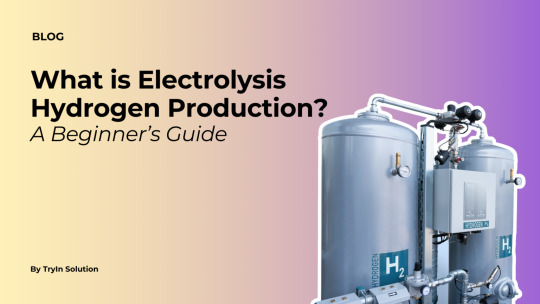#excel relative cell reference
Explore tagged Tumblr posts
Text
youtube
Cell Reference in MS Excel | Relative, Absolute & Mixed Cell Referencing https://youtu.be/-EVmfkY5HLU
#TechAlert #MSExcel #Microsoft #msoffice #tipsandtricks #howto #cellReference #Excel #trendingreel #viral #youtubeshorts #fb #love #easy #computer #computercourses #Education
#Cell Reference in MS Excel | Relative#Absolute & Mixed Cell Referencing#https://youtu.be/-EVmfkY5HLU#TechAlert#MSExcel#Microsoft#msoffice#tipsandtricks#howto#cellReference#Excel#trendingreel#viral#youtubeshorts#fb#love#easy#computer#computercourses#Education#watch video on tech alert yt#like#technical#instagood#technology#youtube#shorts#Youtube
1 note
·
View note
Text
The Power Of Polymer: Unfolding The Magic Of Polyurethane Foam Production

INTRODUCTION:
In the dynamic and evolving world of polymer science, one name specifically stands out due to its versatility and vast applicability – Polyurethane. A byproduct of the mind-boggling chemical reaction between two liquid materials, polyurethane is a unique type of polymer that effectively transforms into a foam. This article endeavors to offer you a detailed look into the exciting world of polyurethane foam production
THE DYNAMIC DUO:
Polyurethane foam is produced when two chemically distinct liquid materials – commonly referred to as the “”A”” component and “”B”” component – are combined under specifically controlled conditions.
The “”A”” component, or Polymeric MDI (methylene diphenyl diisocyanate), is a reactive isocyanate that boasts a relatively low viscosity level, enabling it to mix flawlessly with the “”B”” component. It has a brownish coloration and often exudes a slightly sweet smell.
Meanwhile, the “”B”” component, also known as Polyol, is a polyether compound that is generally less reactive than its “”A”” counterpart. It is characterized by a pale, almost transparent color and presents a tasteless, odorless profile.
POLYURETHANE PRODUCTION:
Let’s delve into the fascinating process through which these two distinct liquids join forces to produce the mighty polyurethane foam.
When combined, the polyether polyol and the polymeric MDI kickstart an exothermic chemical reaction that generates a considerable amount of heat. During this process, tiny gas bubbles are formed, which get trapped within the polymer structure, eventually giving rise to what we commonly recognize as foam. This intriguing process is commonly referred to as “”foaming.””
The reaction’s speed and the cell structure’s quality are heavily dependent on the specific quantities and properties of the A and B components. Manipulating these parameters allows for the production of a wide variety of foam types from rigid and semi-rigid to flexible. Additionally, various catalysts and surfactants can be added to control the cell structure’s size and distribution, as well as the reaction speed.
The transformation process from a liquid state to a solid, foamed state is surprisingly quick – often taking less than a few minutes. However, it’s noteworthy to mention that the foam continues to cure and reach its complete strength over the course of a few hours or even days.
APPLICATIONS OF POLYURETHANE FOAM:
The versatility of polyurethane foam is extraordinary. From furniture and bedding to automotive applications, thermal insulation in construction, and even in the footwear industry, polyurethane foam has spread its roots far and wide.
UNDERSTANDING THE SCIENCE:
The combination of a polyether polyol and a polymeric MDI generates not just heat but also a new product – urethane. Urethane forms strong, resilient bonds that contribute to the flexible, durable nature of the resultant foam. This is what makes polyurethane an excellent choice for various applications that require durability, flexibility, and excellent thermal and acoustic insulation properties.
In conclusion, the creation of polyurethane foam from two liquid materials is a mesmerizing example of polymer formation, which encapsulates the dexterity and capability of synthetic chemistry. By manipulating the compounds’ properties and the conditions under which the reaction occurs, scientists and engineers have managed to expand the realms of possibility, thereby furthering the boundaries of modern industrial applications. Thus, polyurethane foam not only offers an excellent material for various purposes but also profoundly echoes the power and potential of polymer science.
Tagged Foundation Solutions, Polymer, Power Of Polymer
#Foundation Solutions#Power Of Polymer#Foundation Repair#Foundation#Polymer#foundation contractor#foundation experts#foundation services#foundation repair near me
6 notes
·
View notes
Text
Yes!!! I love spreadsheet art!! That frog is so cute and also massive!
If you really want to get into conditional formatting art, try an animation!


These are some I made in the past. The first one reacts to the amount of school assignments handed in. (I'm using a checkbox shortcut here to preview the animation though).
Explination/tutorial below if you want to try!




Overview of what I did/2 different methods:
I used two different methods to make these. For the flower, I just rawdogged the art as I went, put an IFS() formula in each cell and adjusted that each frame I made. For the dragon, I made reference frames and then applied a blanket formula in each cell of the final that would grab the number from the correct frame, depending on what the counter said (the counter was a Named Range called "frame" that was just the cell that counted the amount of checkboxes marked TRUE).
How to:
If you want to try it out, I recommend making the frames beforehand and grabbing it for the final. Instead of applying the IFS() formula to every cell, like I did back then, I would recommend using an array formula. I'm not sure on whether the syntax is the same in excel, but in google sheets, it would look something like: =ARRAY_FORMULA(IFS(frame=1, A1:F6, frame=2, G1:L6, frame=3, M1:R6)). Where A1:F6 is the entire dimensions of the first frame, etc. if you place that in the top left corner cell of where you want the final animation, it will automatically fill in the surrounding cells with the results from that formula!
For the counter, you don't have to make it a Named Range if it's not available in excel or it's just one too many of steps. You can just reference it directly like $G$8. The $s lock it so it will always reference the same cell, even if you copy and paste the formula somewhere else (otherwise it moves relative to the change). You should put the $s on the frame ranges too ($A$1:$F$6). The formula for the counter is just =COUNTIF(L16:P17, TRUE) where L16:P17 is just a bunch of checkboxes. (One again there might be a syntax difference between GS and Excel).
Also, make a little reference border for your frames! Helps keep track of dimensions. It also automatically applied the conditional formatting to the numbers so I could easily reference which colour was which value. I don't recommend doing much more than 10 colours. For the background, it was a conditional formatting of dark grey applied only to empty cells

Pros of dragon method:
The pros of using this method is that it's quicker, it's easier, you can make more detailed art without getting confused, and adding new frames is super simple. The con is that it takes up space. If you don't want to have reference frames visible, you can rawdog it in the cells like with the flower, or you can put the reference frames on a separate sheet/tab. Then the range you'd pull from would look like Sheet2!A1:F6 but would otherwise look the same.
----
Anyway, making these are super fun! I totally recommend if you enjoy long arduous processes that are not at all what you're supposed to be using a software for and have a mediocre end result that honestly would be a lot easier to achieve in a different way. However, if you are willing to do it, it can add a very fun dynamic aspect to your spreadsheets!
It doesn't have to be complex too! These mini bottles would just fill up with a mysterious potion as assignments were handed in. Supposedly. I never actually finished it.

(PS: don't try to make these on a phone, I was just visiting it on one to make the GIFs)
Okay so in my Computer Applications class we learned about conditional formatting in Excel, where you can change the color of a cell by inputting certain values.
We're supposed to use it to model heat gradients in metals, but I found a better application:

FROG ART
#anyway I love that frog so much#you can make the conditional formating change the number colour too so that it blends in with the background#but I recommend saving that until a last step so you can see what you're doing while you wor#yup yup#my rambles#my art#spreadsheets
10K notes
·
View notes
Text
Roof Insulation Company

When considering the cost of mineral wool insulation, it is generally more expensive than other types of insulation. The exact cost will depend on factors such as the thickness of the insulation, the size of the area to be insulated, and the region you are located in. However, the fire safety and soundproofing benefits offered by mineral wool insulation make it a worthwhile investment for many homeowners. Fiberglass insulation is a popular and affordable option, offering excellent thermal resistance and fire safety. It is relatively easy to install and provides effective temperature regulation for your home. The installation process for fiberglass insulation is relatively straightforward - insulation installation brisbane.
Improved insulation means reduced energy usage, which translates to a smaller carbon footprint. By consuming less energy for heating or cooling purposes, homes with proper ceiling insulation contribute positively to environmental sustainability. Ceilings play a critical role in regulating heat flow, both in and out of your home. Insulation acts as a barrier, preventing heat from escaping in winter and blocking the influx of hot air during summer.
This helps maintain a consistent temperature throughout your home, ensuring a comfortable and energy-efficient living environment. Ceiling insulation batts and rolls are referred to as bulk insulation and are best for preventing heat transfer through conduction. They can come in a variety of forms and styles, from concave to traditional. Understanding your ceiling will be helpful to provide the best insulation solution for it. Open cell spray foam insulation may be the best product for insulating vaulted ceilings - insulation installer brisbane.
Homeowners generally install radiant barriers in their attics to reduce summer heat, which reduces cooling costs. Reflective surfaces are incorporated into insulation systems that can include a variety of backing materials. Batt insulation excels in standard joist spaces, while spray foam tackles irregular or limited areas. However, due to the specialized equipment and expertise required, professional installation is usually recommended for spray foam insulation. For more information, please visit our site https://roofsuckers.com.au/.
0 notes
Text
Advancing Diagnostic Imaging with Color Doppler Sonography

Medical diagnostics have evolved rapidly over the past few decades, offering non-invasive, accurate, and real-time insights into the human body. One of the most powerful tools in modern diagnostic imaging is color doppler sonography. This advanced ultrasound technique has become indispensable in evaluating blood flow, detecting vascular conditions, and improving clinical outcomes across multiple medical specializations.
As a global leader in medical technology, Trivitron Healthcare is committed to delivering high-quality diagnostic imaging equipment that meets the dynamic needs of healthcare professionals. In this article, we will explore the working principles, clinical applications, and advantages of color doppler sonography, and how Trivitron is supporting diagnostic excellence with cutting-edge solutions.
What is Color Doppler Sonography?
Color doppler sonography, also known as color flow doppler ultrasound, is an imaging technique that uses sound waves to visualize blood flow through vessels and organs in real-time. Unlike conventional grayscale ultrasound, which provides static images of soft tissues and anatomical structures, color doppler overlays moving colors onto the image to represent the direction and velocity of blood flow.
Red and blue color codes are typically used to indicate the flow direction relative to the probe:
Red indicates blood flowing toward the probe.
Blue shows blood flowing away from the probe.
The ability to visualize hemodynamics makes color doppler sonography a valuable tool in diagnosing conditions related to blood circulation, such as blockages, narrowing of vessels, blood clots, and abnormal blood flow patterns.
How Does Color Doppler Sonography Work?
This imaging technique combines traditional B-mode (brightness mode) ultrasound with Doppler effect principles. The Doppler effect refers to the change in frequency or wavelength of a wave in relation to an observer moving relative to the wave source—in this case, moving red blood cells.
Here’s how the process works:
Ultrasound waves are transmitted into the body by a transducer.
These waves bounce off moving red blood cells in the bloodstream.
The frequency shift is captured and analyzed to determine the speed and direction of blood flow.
The data is color-coded and displayed on the screen, superimposed on a grayscale image of the organ or vessel.
With this method, physicians can detect subtle variations in blood flow dynamics that may indicate underlying pathology.
Key Applications of Color Doppler Sonography
Color doppler sonography has become a standard diagnostic tool across a wide range of medical fields. Its non-invasive nature and real-time capabilities make it ideal for quick, effective assessments.
1. Cardiology
Evaluation of blood flow through heart chambers and valves.
Detection of congenital heart defects, valve disorders, and myocardial ischemia.
Assessment of cardiac output and function.
2. Vascular Medicine
Identification of arterial and venous blockages.
Diagnosis of deep vein thrombosis (DVT), varicose veins, and arterial stenosis.
Monitoring of grafts and stents post-surgery.
3. Obstetrics and Gynecology
Assessing fetal health and placental blood flow.
Diagnosing ectopic pregnancies and fetal growth restrictions.
Evaluating uterine and ovarian vascularity.
4. Nephrology and Urology
Evaluating renal perfusion and detecting kidney blockages.
Diagnosing testicular torsion and other scrotal pathologies.
5. Liver and Abdominal Imaging
Assessing portal hypertension, liver cirrhosis, and tumor vascularity.
Evaluating blood flow in abdominal organs such as the pancreas and spleen.
Advantages of Color Doppler Sonography
Non-Invasive and Safe Since it does not use ionizing radiation, color doppler sonography is considered safe even for pregnant women and children.
Real-Time Visualization The real-time imaging allows physicians to assess blood flow instantly during the examination.
Early Detection of Diseases It can reveal circulatory issues before symptoms appear, facilitating early intervention and treatment planning.
Cost-Effective Diagnostic Tool Compared to CT angiography or MRI, doppler sonography is significantly more affordable and accessible.
Guidance for Interventions It helps in guiding procedures such as biopsies, catheter placements, and surgeries by providing accurate visualization of vascular structures.
Trivitron’s Role in Enhancing Doppler Imaging
At Trivitron Healthcare, we are driven by innovation and clinical excellence. Our range of ultrasound and doppler imaging systems is designed to support diagnostic precision across multiple healthcare settings—from urban hospitals to rural clinics.
Key features of Trivitron’s doppler-enabled ultrasound systems include:
High-Resolution Imaging: Ensures detailed visualization of blood flow and soft tissues.
Advanced Color Flow Mapping: Offers precise, real-time assessment of vascular conditions.
User-Friendly Interfaces: Simplifies workflows for clinicians, improving diagnostic efficiency.
Portable and Versatile Systems: Designed for use in various clinical environments including emergency care, operating rooms, and outpatient departments.
We understand that the accuracy of a diagnosis often determines the success of a treatment. That’s why our technologies are rigorously tested to meet international quality and performance standards.
Future of Color Doppler Sonography
The field of ultrasound imaging continues to evolve, with innovations like elastography, contrast-enhanced ultrasound, and artificial intelligence enhancing the diagnostic value of traditional systems.
The future of color doppler sonography will likely include:
AI-Assisted Interpretation: Enhancing accuracy and reducing operator dependency.
3D/4D Doppler Imaging: Providing more comprehensive insights into vascular structures.
Tele-ultrasound Capabilities: Allowing remote consultations and diagnoses in underserved regions.
Trivitron is actively exploring these advancements to further empower clinicians with intelligent, next-generation diagnostic tools.
Conclusion
Color doppler sonography has transformed how clinicians evaluate and monitor circulatory health. Its ability to provide real-time, non-invasive, and detailed blood flow information makes it a vital component of modern medical diagnostics.
As a trusted name in healthcare innovation, Trivitron remains committed to supporting diagnostic excellence through advanced imaging technologies. By continually investing in research, design, and clinician training, we ensure that our solutions not only meet today’s clinical needs but also anticipate tomorrow’s healthcare challenges.
Whether you are a radiologist, cardiologist, obstetrician, or general practitioner, incorporating color doppler sonography into your diagnostic arsenal can significantly improve patient care outcomes.
0 notes
Text
Is Lifepo4 Lithium Battery Safe?

LiFePO4 Lithium battery has been widely used in solar energy storage, electric vehicles and emergency power supply systems in recent years. As a high-efficiency, long-life and thermally stable energy storage solution, lifepo4 lithium battery has attracted the attention of users around the world for its excellent safety performance.
But batteries are chemical energy storage products after all. If they are improperly operated during transportation, installation or use, there may still be certain risks. This article will combine Xindun’s practical experience in energy storage battery manufacturing to deeply analyze the safety characteristics, potential risks and prevention suggestions of lifepo4 lithium batteries, and provide professional reference for importers, wholesalers and system integrators.
What is lifepo4 lithium battery?
Lifepo4 lithium battery is a rechargeable lithium battery that uses lifepo4 lithium battery as the positive electrode material. The battery structure is relatively stable and consists of a positive electrode (lithium iron phosphate coated aluminum foil), a negative electrode (graphite coated copper foil), a diaphragm and an organic electrolyte. It is characterized by long cycle life, stable charge and discharge performance, and mild chemical properties.
The lifepo4 lithium battery produced by Xindun has a 1C standard rate. For example, a 100Ah battery can support a maximum of 100A charge and discharge, which is suitable for solar energy storage and medium and large off-grid systems.
Safety performance of lifepo4 lithium batteries
Compared with traditional ternary lithium or lead-acid batteries, lithium iron phosphate technology has advantages in thermal stability and chemical stability. Xindun strictly implements battery safety standards to ensure that every battery cell shipped has the following core safety performance:
Thermal runaway is difficult to trigger: the battery structure is stable and violent chemical reactions will not easily occur inside.
Overcharge protection: The built-in BMS (battery management system) can effectively control charging and discharging to avoid overheating or short circuit.
Fireproof shell design: The battery shell is made of high temperature resistant and high strength materials.
Multiple protection circuits: support overvoltage, overcurrent, overtemperature, short circuit protection, etc.
Are there any safety hazards?
Although lifepo4 lithium batteries are relatively safe, improper use may still cause the following problems:
1. Battery fire
Although the probability is extremely low, under extreme conditions such as severe overcharging, battery puncture or external impact, the battery may catch fire due to thermal runaway. For this reason, Xindun recommends that customers add smoke sensors, thermal control systems and automatic power-off mechanisms to the project design.
2. Hazardous gas leakage
Lifepo4 lithium batteries do not release toxic gases during normal use. However, if the battery shell is broken, the electrolyte reacts with air and moisture, which may release toxic substances such as hexafluorophosphate (PF6), irritating the respiratory tract and endangering health.
3. Chemical burns
Direct contact of the electrolyte with the skin or eyes may cause burns. Although the Xindun battery electrolyte is tightly encapsulated, it is recommended to wear gloves and protective glasses during operation to ensure safety.
Toxicity of lithium batteries
The main components of LiFePO4: lithium and phosphorus, are in a stable chemical state in the battery structure and generally do not cause direct harm to the human body in a free form. Xindun batteries undergo multiple rounds of sealing and airtightness tests to ensure chemical stability during transportation and use.
However, it should be noted that extreme high temperatures, mechanical damage or internal short circuits may induce degassing reactions, so it is not recommended to store batteries in a closed, humid or high-temperature environment.
Safety assurance of Xindun lifepo4 lithium batteries
To ensure that customers minimize risks during use, Xindun performs multiple safety tests before the battery leaves the factory and provides the following support to cooperative customers:
MSDS/SDS safety data files
Provide complete information on material composition, safety measures, handling recommendations, etc., suitable for customs declaration, transportation and project filing.
Professional installation guidance
Provide graphic instructions and remote video support to ensure that customers install in compliance and avoid miswiring or misoperation.
Emergency plan support
Assist customers in formulating emergency handling procedures for battery failure, leakage or fire.
What should I do in case of an accident?
Xindun recommends that customers equip themselves with the following emergency plans and equipment:
When the battery catches fire: use dry powder or carbon dioxide fire extinguisher, and do not use water to extinguish the fire;
When chemicals come into contact with skin or eyes: immediately rinse with clean water for at least 15 minutes and seek medical attention as soon as possible;
Inhalation of toxic gases: move to a well-ventilated area, breathe oxygen or seek medical attention if necessary;
Battery leakage accident handling: wear protective equipment, use adsorbent materials to clean up, and prevent chemicals from entering the sewer or water source.
As one of the safest energy storage technologies today, lifepo4 lithium batteries are gradually becoming the first choice for solar energy systems and backup power projects. Xindun provides high-performance and high-safety battery products to global distributors, wholesalers and system integrators.
While ensuring the safety performance of the product itself, we also recommend that partners strengthen operation training, storage specifications and emergency handling capabilities. Xindun welcomes global customers to contact us for more battery technical information, safety recommendations and OEM/ODM cooperation plans.
0 notes
Text
¶ … Pap smears have played a vital role in the decrease of cervical cancer incidence and mortality . The test itself, however, is highly subjective with a limited sensitivity of 50% along with a number of inherent individual variability . This limited sensitivity extends to other cancers including endometrial adenocarcinoma. This particular type of cancer is the most common gynecologic cancer diagnosed in the United States, affecting postmenopausal women predominantly . With the case study purporting the existence of abnormal cells diagnosed as endometrial adenocarcinoma; it is safe to assume that the woman in question was experiencing other symptomology. Endometrial cancer develops within the lining of the uterus, known as the endometrium, which thickens monthly in preparation for pregnancy and shed subsequently during menstruation . Three types of endometrial cancer exist: adenocarcinoma, papillary serous carcinoma, and clear cell adenocarcinoma . The cause of endometrial cancer is unknown, but there are a number of risk factors associated with the disease which may point to an oncogenic source including hormone levels, which in peri and postmenopausal women can fluctuate towards increased estrogen production which has been linked to cancer . Additional risk factors include increasing age, metabolic syndromes like obesity and diabetes, long-term use of tamoxifen, hormone replacement therapy, as well as having a first degree relative afflicted with the disease . Adenocarcinoma develops predominantly on the surface of the endometrium and account for 90% of all cases, with abnormal bleeding presenting as a symptom . A known precursor to adenocarcinoma is endometrial complex atypical hyperplasia (CAH) which carries a 25% chance of oncogenesis . The treatment for CAH, as with adenocarcinoma, is usually hysterectomy, although it can benefit from progestational treatment . Management of CAH is difficult due to the inherent inconsistencies of the lesions classification, natural history, and histologic diagnosis . The patient in question will need a further endometrial sampling analyzed and given an International Federation of Gynecology and Obstetrics (FIGO) score, usually through a biopsy under anesthesia called a D&C with an adenocarcinoma appearing as squamous differentiation . If the cancer is localized the course of treatment will likely be hysterectomy and bilateral salpino-oophorectomy, with the best results obtained by concurrent radiation therapy if there is a deep invasion of the myometrial muscle . Within the pathology of endometrial adenocarcinoma, it is the presence of strong tumor differentiation involving the upper 66% of the corpus along with negative peritoneal cytology and no vascular space invasion that requires a total hysterectomy along with the removal of pelvic lymph nodes . Presence of regional and distant metastases alters the stage of the disease and for these patients, standard therapy is inadequate . With the diagnoses of endometrial adenocarcinoma it is most likely that the patient in question is at an early stage of disease. To have a better prognosis, further surgical diagnosis to achieve a FIGO stage is needed as that will allow doctors to ascertain the level of myometrial muscle invasion, histological type, and differentiation grade . If the patient is at a FIGO stage one, the five-year survival rate stands at 85%, with stage II standing at 75%, stage III at 45%, and stage IV at 25% . Treatment should follow the established regimen of hysterectomy along with radiation therapy. References Amant, F. et al. 2005. Endometrial Cancer. Lancet, 366, pp. 491-505. Boulet, G.A.V., et al. 2008. Human Papillomavirus in Cervical Cancer Screening: Important Role as Biomarker. Cancer Epidemiology, Biomarkers, and Prevention, 17(4), pp. 810-17. Cohn, D.E. et al. 2006. Advanced endometrial cancer with serious metastasis in a 17-year-old. Gynecologic Oncology, 101(2), pp. 256-59. Eltabbakh, G.H. et al. 1997. Excellent long-term survival and absence of vaginal recurrences in 332 patients with low-risk stage I endometrial adenocarcinoma treated with hysterectomy and vaginal brachytherapy without formal staging lymph node sampling: report of a prospective trial. International Journal of Radiation, Oncology, Biology, and Physics, 38(2), pp. 373-80. Grisby, P.W. et al. 1992. Clinical stage I endometrial cancer: prognostic factors for local control and distant metastasis and implications of the new FIGO surgical staging system. International Journal of Radiation, Oncology, Biology, and Physics, 22, pp. 905-11. Izadi-Mood, N. et al. 2009. Reproducibility determination of WHO classification of endometrial hyperplasia/well differentiated adenocarcinoma and comparison with computerized morphometric data in curettage specimens in Iran. Diagnostic Pathology, 4(10), pp. 1-9. Keys H.M. et al. 2004. A phase III trial of surgery with or without adjunctive external pelvic radiation therapy in intermediate risk endometrial adenocarcinoma: a Gynecologic Oncology Group study. Gynecologic Oncology, 92(3), pp. 744-51. Lazcano-Ponce, E. et al. 2008. Decreasing Cervical Cancer Mortality in Mexico: Effect of Papanicolaou Coverage, Birthrate, and the Importance of Diagnostic Validity of Cytology. Cancer Epidemiology, Biomarkers, and Prevention, 17(10), pp. 2808-17. Leitao Jr., M.M. et al. 2009. Comparison of D&C and office endometrial biopsy accuracy in patients with FIGO grade I endometrial adenocarcinoma. Gynecologic Oncology, 113(1), pp. 105-8. Rubatt, J.M. et al. 2005. Development of metastatic endometrial endometrioid adenocarcinoma while on progestin therapy for endometrial hyperplasia. Gynecologic Oncology, 99, pp. 472-6. https://www.paperdue.com/customer/paper/pap-smears-have-played-a-196662#:~:text=Logout-,Papsmearshaveplayeda,-Length2pages Read the full article
0 notes
Text
Top 10 Nutrient Rich Foods for Optimal Health: Boost Your Diet Today

Top 10 Nutrient Rich Foods for Optimal Health: Boost Your Diet Today
Supporting your overall health starts with choosing foods packed with essential nutrients. Nutrient-rich foods are crucial in preventing chronic diseases, boosting energy levels, and supporting overall well-being.No single food provides all the vitamins and minerals your body needs, so maintaining a varied diet is key to optimal health.In this post, we’ll explore the top 10 nutrient rich foods you should incorporate into your diet, along with their health benefits, delicious ways to enjoy them, and tips for reducing processed foods.Let’s dive in!
What is Nutrient Density?
Nutrient density refers to the concentration of vitamins, minerals, and beneficial compounds in food relative to its calorie content.Foods with high nutrient density offer maximum nutrients per calorie, making them excellent choices for a healthy diet.Prioritizing these foods ensures your body gets what it needs without excessive calories.
Why You Should Avoid Processed Foods
Highly processed foods, such as sugary cereals, packaged snacks, and instant meals, often contain unhealthy fats, sugars, and additives.Regular consumption of these foods can lead to weight gain, inflammation, and an increased risk of chronic diseases like type 2 diabetes, heart disease, and obesity.Tips to Reduce Processed Foods:- Opt for whole-grain options instead of refined grains. - Swap sugary drinks for water, herbal teas, or fruit-infused water. - Cook at home to manage ingredients and portion sizes effectively.
Health Benefits of Nutrient-Rich Foods
Incorporating nutrient-rich foods into your diet can provide numerous health benefits:- Reduce Inflammation: Anti-inflammatory compounds in foods like berries, fatty fish, and leafy greens help combat chronic inflammation. - Support Digestion: High-fiber foods like kale, potatoes, and berries promote gut health. - Boost Brain Function: Omega-3 fatty acids from fish and antioxidants from dark chocolate contribute to cognitive health. - Strengthen Immunity: Nutrient-dense foods offer vitamins and minerals that fortify the immune system. - Maintain Healthy Weight: These foods are often naturally low in calories and high in fiber, promoting satiety.
10 Best Nutrient-Rich Foods to Add to Your Diet
1. Salmon: The Ultimate Source of Omega-3s

Salmon isn’t just a tasty seafood choice — it’s a nutrient powerhouse that can significantly enhance your overall health. It’s packed with omega-3 fatty acids, high-quality protein, and essential vitamins and minerals that support your brain, heart, eyes, and immune system.A 100-gram serving of wild Atlantic salmon provides approximately 2.2 grams of omega-3s and 25.4 grams of protein, making it an excellent addition to a balanced diet.But that’s not all! Salmon is also rich in:- B Vitamins for energy production - Potassium to regulate blood pressure - Selenium boosts immune function - Antioxidants to protect cells from oxidative damageAdding salmon to your meals twice a week is an easy and effective way to reduce inflammation, improve cardiovascular health, and support cognitive function. Enjoy the delicious benefits of this superfood! Ways to Enjoy: - Grilled or Baked: Drizzle salmon with olive oil, lemon juice, and herbs for a simple yet flavorful dish. - Salad Topping: Flake cooked salmon over a leafy green salad with avocado and a light vinaigrette. - Healthy Wrap: Add salmon to a whole-grain wrap with avocado, cucumber, and a dollop of Greek yogurt sauce. - Salmon Patties: Mix flaked salmon with breadcrumbs, eggs, and herbs to create delicious salmon patties. 2. Sardines: Small Fish, Big Benefits

Sardines are a nutrient-packed seafood choice, offering a generous dose of heart-healthy omega-3 fatty acids. As low-mercury fish, they’re a safer alternative to larger species, making them ideal for regular consumption.One of the unique benefits of sardines is that they’re typically eaten whole — bones included — providing an excellent source of calcium and vitamin D for stronger bones and teeth.Along with these, sardines deliver high-quality protein and healthy fats that support overall health.But that’s not all! Sardines are also rich in:- Iron and Zinc boost energy levels and immune function - Selenium for its antioxidant properties, protecting cells from damageAdding sardines to your diet twice a week is a sustainable and nutrient-rich choice that can improve heart health, bone strength, and overall well-being. Ways to Enjoy: - On Whole-Grain Crackers: Top whole-grain crackers with sardines, a squeeze of lemon, and fresh herbs for a quick, nutritious snack. - In Salads: Add sardines to leafy green or Mediterranean-style salads for a protein boost and a burst of flavor. - With Pasta: Toss sardines into whole-grain pasta with garlic, olive oil, and capers for a delicious and nutrient-rich meal. - Blended in Spreads: Mix sardines with Greek yogurt, lemon juice, and herbs to create a creamy dip or sandwich spread. 3. Kale: The Leafy Green Superfood

Kale is a nutrient-dense leafy green, packed with an impressive variety of vitamins, minerals, and antioxidants. With high levels of vitamins A, C, K, and B6, kale supports immune function, skin health, and bone strength.It also contains powerful bioactive compounds like sulforaphane, which may have cancer-fighting properties. Thanks to its low-calorie content and high nutrient density, kale is an excellent choice for maintaining long-term health.But there’s more! Kale also provides:- Calcium and Magnesium to strengthen bones - Antioxidants to reduce inflammation - Fiber for better digestive healthIncorporating kale into your meals regularly can boost your immune defenses, lower your risk of chronic diseases, and support overall well-being. Ways to Enjoy: - In Smoothies: Blend fresh kale with bananas, berries, and Greek yogurt for a nutrient-packed smoothie. - In Salads: Massage kale leaves with olive oil and lemon juice to soften them, then toss with nuts, seeds, and feta cheese for a delicious salad. - In Stir-Fries: Sauté kale with garlic, olive oil, and a splash of soy sauce for a quick and nutritious side dish. - As Kale Chips: Bake kale leaves with a drizzle of olive oil and a sprinkle of sea salt for a crunchy, guilt-free snack. - In Soups and Stews: Add kale to soups or stews for extra fiber and nutrients. 4. Seaweed: A Natural Source of Iodine

Seaweed is a nutrient-dense superfood commonly enjoyed in coastal cuisines, especially in Asian cultures. Varieties like nori, kelp, wakame, and dulse are packed with essential minerals, making them a standout source of iodine, which is crucial for maintaining thyroid health.Beyond iodine, seaweed offers a wealth of nutrients, including:- Calcium for strong bones - Iron to boost energy levels - Magnesium for muscle and nerve function - Antioxidants to reduce inflammation and support heart healthSome types of seaweed also provide plant-based omega-3 fatty acids and fiber to support digestive health.Incorporating seaweed into your meals a few times a week can give your diet a powerful nutrient boost, especially if your iodine intake is limited from other sources. Ways to Enjoy: - In Soups: Add dried seaweed to miso soup, ramen, or seafood stews for an umami-rich boost. - On Rice Bowls: Sprinkle roasted seaweed flakes over rice bowls, poke, or bibimbap for a crunchy, salty accent. - As Sushi Wraps: Use nori sheets to make sushi rolls or rice wraps, paired with vegetables, avocado, and fish. - In Salads: Mix fresh seaweed varieties like wakame into salads with sesame oil, rice vinegar, and sesame seeds. - As a Snack: Enjoy seasoned seaweed sheets for a light, savory snack.Correlated Article:

Top 10 Healthy Eating Tips for a Balanced Diet and Better Health 5. Garlic: Nature's Immune Booster

Garlic has been prized for centuries for its medicinal properties and powerful health benefits. Rich in antioxidants and beneficial compounds like allicin, garlic is known to support heart health by helping to lower blood pressure and cholesterol levels.But garlic’s benefits don’t stop there. It also boasts:- Antimicrobial properties to fight infections - Immune-boosting effects to reduce the severity and frequency of colds - Sulfur compounds that support liver function and aid in detoxificationIncorporating garlic into your daily meals is a simple and flavorful way to strengthen your immune system, promote cardiovascular health, and support overall well-being. Ways to Enjoy: - In Stir-Fries and Soups: Sauté minced garlic in olive oil to add depth and aroma to vegetable stir-fries, soups, or pasta sauces. - Roasted Whole: Roast whole garlic bulbs in the oven until soft and caramelized, then spread the creamy cloves onto whole-grain bread or mix into mashed potatoes. - In Salad Dressings or Marinades: Whisk minced garlic into homemade vinaigrettes or marinades for added flavor and nutritional benefits. - Garlic Butter: Combine roasted garlic with butter or olive oil, herbs, and lemon juice for a delicious spread or vegetable topping. - As a Flavor Booster: Add finely chopped garlic to sautés, stews, or grain bowls for a savory, umami-rich taste. 6. Shellfish: Nutrient-Dense Seafood

Shellfish like clams, oysters, and mussels are among the most nutrient-dense foods you can enjoy. They offer a concentrated source of essential vitamins and minerals, particularly vitamin B12, zinc, and iron, which are vital for energy production, immune function, and brain health.With their low-calorie and high-protein profile, shellfish make an excellent addition to a balanced diet.Additional benefits of shellfish include:- Omega-3 fatty acids to support heart health - Selenium with antioxidant properties to protect cells from damage - Iron and Zinc to boost immunity and maintain energy levelsIncorporating shellfish into your meals once or twice a week can significantly enhance your nutrient intake, promote overall well-being, and add delicious variety to your diet. Ways to Enjoy: - Steamed with Garlic and White Wine: Steam clams or mussels with garlic, white wine, and fresh herbs for a classic, flavorful dish. - In Pasta Dishes: Toss shellfish into whole-grain pasta with olive oil, tomatoes, and basil for a nutrient-rich seafood pasta. - Fresh with Lemon Juice: Serve fresh oysters on the half shell with a squeeze of lemon and a dash of hot sauce for a briny, refreshing appetizer. - In Soups and Stews: Add shellfish to hearty seafood chowders or Mediterranean-style seafood stews for a comforting meal. - Grilled or Baked: Top oysters or clams with breadcrumbs, garlic, and Parmesan cheese, then bake or grill for a crispy, indulgent treat. 7. Potatoes: The Energy-Packed Vegetable

Potatoes are a versatile and nutrient-rich vegetable that often doesn't get the credit it deserves. When eaten with the skin, they offer a generous supply of potassium, magnesium, iron, fiber, and vitamin C. Unlike refined carbs, potatoes provide slow-releasing energy that helps keep you full longer while maintaining stable blood sugar levels. Plus, they’re naturally low in fat and cholesterol-free, making them a wholesome choice for a balanced diet.Other health benefits of potatoes include:- Heart Health support through potassium, which regulates blood pressure - Muscle Function support from magnesium and potassium - Digestive Health with fiber that aids digestionFor an extra boost of antioxidants, choose colorful varieties like purple or red potatoes. To get the most nutritional value, enjoy potatoes in their natural form, skin-on — whether roasted, baked, or boiled. Ways to Enjoy: - Roasted or Baked: Slice potatoes into wedges, toss with olive oil, garlic, rosemary, and sea salt, then roast for a crispy, golden side dish. Read the full article
#anti-inflammatoryfoods#balanceddietfoods#bestnutrientdensefoods#boostimmunitynaturally#foodsforoptimalhealth#healthyeatingtips#hearthealthyfoods#nutrientrichdiet#nutrientrichfoods#superfoodsforhealth
0 notes
Text
How to Get Data from Another Sheet in Excel Easily
Introduction Microsoft Excel is a powerful tool for managing and analyzing data. One essential skill is extracting data from one sheet to another, which helps with consolidation, calculations, and referencing. This guide covers various methods to accomplish this efficiently.
Understanding Excel's Structure
Workbook: The primary Excel file containing one or more sheets.
Worksheet/Sheet: Tabs within a workbook for organizing data.
Cell: The smallest unit identified by a row and column (e.g., A1, B2).
Accurate referencing is crucial for seamless data retrieval across sheets.
Fundamentals of Referencing in Excel Referencing allows linking data across worksheets, workbooks, or external sources. References can be:
Absolute: Fixed cell reference (e.g., $A$1).
Relative: Adjusts based on position.
For another sheet: =Sheet2!A1 For another workbook: ='C:\Users\Username\Documents[Workbook2.xlsx]Sheet2'!A1
Method 1: Using Cell References
Select the destination cell.
Type = and navigate to the source sheet.
Click the desired cell; Excel generates a reference.
Press Enter to retrieve the data.
This method is best for simple references without calculations.
Method 2: Using Excel Functions
VLOOKUP: Searches for a value in a column and retrieves corresponding data.
INDEX & MATCH: A flexible alternative for complex lookups.
These functions help pull data dynamically from another sheet based on conditions.
Method 3: Consolidating Data with PivotTables
Select data ranges across sheets.
Insert a PivotTable (Insert > PivotTable).
Define fields (rows, columns, values).
View and analyze the summarized data.
PivotTables are ideal for summarizing and consolidating large datasets.
Method 4: Utilizing Power Query
Navigate to Data > Get Data.
Select a source (another workbook, CSV, database).
Transform data (filter, merge, clean).
Load the transformed data back into Excel.
Power Query is excellent for advanced data manipulation and automation.
Linking Data Across Spreadsheets To link data from another workbook: ='[WorkbookName]SheetName'!CellReference Alternatively, use Data > Link to connect without entering formulas manually.
Best Practices for Data Retrieval
Use named ranges for clarity.
Use relative references where applicable.
Regularly check formulas for errors.
Use external references for data from other workbooks.
Troubleshooting Common Issues
#REF! Error: Ensure references are valid and sheets exist.
Circular References: Avoid formulas referring back to themselves.
Incorrect Data: Verify source data and update links.
Conclusion Retrieving data from another sheet enhances efficiency in Excel. Whether using cell references, functions, PivotTables, or Power Query, mastering these techniques streamlines data management. Applying best practices ensures accuracy and reliability, helping you make informed, data-driven decisions.
For more details, visit our blog: Get Data from Another Sheet in Excel.
0 notes
Text
Cell Reference in MS Excel | Relative, Absolute & Mixed Cell Referencing https://youtu.be/-EVmfkY5HLU
#TechAlert #MSExcel #Microsoft #msoffice #tipsandtricks #howto #cellReference #Excel #trendingreel #viral #youtubeshorts #fb #love #easy #computer #computercourses #Education
#Cell Reference in MS Excel | Relative#Absolute & Mixed Cell Referencing#https://youtu.be/-EVmfkY5HLU#TechAlert#MSExcel#Microsoft#msoffice#tipsandtricks#howto#cellReference#Excel#trendingreel#viral#youtubeshorts#fb#love#easy#computer#computercourses#Education#instagood#shorts#technical#watch video on tech alert yt#youtube#like#technology
1 note
·
View note
Text
What is Electrolysis Hydrogen Production? A Beginner’s Guide

As the world transitions toward cleaner energy solutions, hydrogen has emerged as a promising alternative to traditional fossil fuels. One of the most sustainable methods of producing hydrogen is through electrolysis. But what exactly is electrolysis hydrogen production, and why is it important? This beginner’s guide aims to answer these questions and shed light on its potential to revolutionize the energy landscape.
Understanding Electrolysis Hydrogen Production
Electrolysis is a process that uses electricity to split water ( H₂O ) into its basic components: hydrogen ( H₂ ) and oxygen ( O₂ ). When the electricity used comes from renewable energy sources like wind or solar, the hydrogen produced is often referred to as “green hydrogen” due to its minimal environmental impact.
The Basic Process
Electrolyzer: The device used for electrolysis consists of an anode and a cathode submerged in water, separated by an electrolyte.
Electric Current: A direct current (DC) is passed through the water.
Separation: Hydrogen gas collects at the cathode, while oxygen is released at the anode.
This simple yet effective process is at the heart of electrolysis hydrogen production, offering a clean and efficient way to generate hydrogen for various applications.
Why is Electrolysis Hydrogen Production Important?
1. A Cleaner Energy Source
Hydrogen produced via electrolysis emits no greenhouse gases during its use, making it an excellent substitute for fossil fuels in sectors like transportation, manufacturing, and power generation.
2. Energy Storage
Hydrogen acts as a powerful energy carrier, enabling the storage of excess energy generated by renewable sources. This addresses the intermittency issues of solar and wind power.
3. Industrial Applications
Industries like steel production, ammonia manufacturing, and chemical refining benefit from the high purity hydrogen generated through electrolysis.
Types of Electrolyzers Used in Hydrogen Production
1. Alkaline Electrolyzers
How It Works: Uses a liquid alkaline electrolyte, such as potassium hydroxide, to conduct electricity.
Advantages: Proven technology, cost-effective, and scalable.
Disadvantages: Lower efficiency compared to advanced systems.
2. Proton Exchange Membrane (PEM) Electrolyzers
How It Works: Utilizes a solid polymer electrolyte to separate hydrogen and oxygen.
Advantages: Higher efficiency and compact design.
Disadvantages: More expensive due to the use of precious metals like platinum.
3. Solid Oxide Electrolyzers
How It Works: Operates at high temperatures to split water molecules.
Advantages: Extremely efficient, especially when integrated with industrial heat sources.
Disadvantages: Still under development and requires further cost reductions.
Applications of Hydrogen from Electrolysis
1. Clean Transportation
Hydrogen-powered fuel cells are being increasingly used in vehicles, providing a zero-emission alternative to gasoline and diesel engines.
2. Power Generation
Hydrogen can be burned or used in fuel cells to generate electricity, making it a flexible energy source for both grid and off-grid applications.
3. Industrial Uses
In industries requiring high temperatures, such as steelmaking, hydrogen offers a cleaner fuel alternative to coal.
4. Export Potential
Countries investing in electrolysis hydrogen production can export green hydrogen to nations seeking to decarbonize their energy systems.
Challenges in Electrolysis Hydrogen Production
1. High Energy Requirements
Electrolysis requires significant amounts of electricity, making its efficiency directly dependent on the energy source used.
2. Cost Factors
The cost of electrolyzers and renewable energy infrastructure is still relatively high, which impacts the overall affordability of green hydrogen.
3. Scaling Up
While the technology is promising, scaling up to meet global energy demands requires further innovation and investment.
The Future of Electrolysis Hydrogen Production
The global push toward sustainability has positioned electrolysis hydrogen production as a cornerstone of the energy transition. Governments and organizations worldwide are investing in research, infrastructure, and policies to support the adoption of green hydrogen. With advancements in electrolyzer technology and renewable energy integration, the cost of hydrogen production is expected to decrease, making it more accessible across industries.
Why Choose TryIn Solution for Hydrogen Solutions?
At TryIn Solution, we understand the transformative potential of green hydrogen and are dedicated to supporting businesses in adopting sustainable energy practices. From providing cutting-edge technology to offering expert guidance, we help you harness the benefits of electrolysis hydrogen production effectively and efficiently.
Conclusion
Electrolysis hydrogen production is a game-changing technology that promises to redefine how we produce and use energy. By offering a clean, sustainable, and versatile energy source, it addresses some of the most pressing challenges of our time, from reducing carbon emissions to ensuring energy security. As we move toward a greener future, investing in this innovative solution will be pivotal for industries and governments alike.
Explore how TryIn Solution can help you integrate hydrogen solutions into your operations. Contact us today to learn more!
0 notes
Text
Top MBA Colleges in Pune: Ranking, Courses, Fees
Pune, often referred to as the "Oxford of the East," is renowned for its educational excellence, especially in the field of management. The city boasts a rich selection of esteemed institutions offering MBA programs, making it a prime destination for aspiring business leaders. Among the top choices for management studies in Pune is HNIMR (Heritage Institute of Management and Research), a well-respected name in the academic community. In this blog, we will explore the diverse opportunities available at management colleges in Pune, highlight the offerings of Institute of Management Pune, and provide a detailed look at pursuing an MBA in Pune.

1. Top Management Colleges in Pune
Pune is home to some of India's leading management colleges, offering diverse programs to cater to the needs of students from various backgrounds. Whether you're looking for a traditional MBA or specialized management courses, Pune provides plenty of options. These colleges combine rigorous academic programs with industry exposure to ensure that graduates are prepared for leadership roles in global organizations.management colleges in pune , institute of management pune , mba in pune , mba colleges in pune.
2. Institute of Management Pune: A Leader in Management Education
When it comes to world-class management education, the Institute of Management Pune (IM Pune) stands out as one of the best choices for MBA aspirants. The institute offers both full-time and part-time MBA programs that are designed to equip students with the skills needed to succeed in the competitive business world. IM Pune is known for its excellent faculty, state-of-the-art infrastructure, and strong industry connections.
The Institute of Management Pune also boasts impressive placement records, with students being recruited by top companies in sectors like consulting, finance, marketing, and technology. The diverse student community and global exposure make it an attractive destination for individuals seeking an all-rounded education in management.
3. Why Pursue an MBA in Pune?
Pune offers an ideal environment for pursuing an MBA in Pune. The city is a hub for educational institutions, multinational companies, and startups, providing students with numerous opportunities for networking, internships, and placements. Pune's relatively low cost of living compared to other metropolitan cities like Mumbai further makes it an appealing destination for students.
In addition to traditional management education, Pune is also home to several industry-specific programs and certifications that can enhance a student’s skills in areas like data analytics, entrepreneurship, digital marketing, and supply chain management.
4. HNIMR: A Premier Institute of Management in Pune
Among the many institutes offering MBA programs in Pune, HNIMR (Heritage Institute of Management and Research) is a standout. Located in the heart of the city, HNIMR is known for its comprehensive management curriculum, industry collaborations, and personalized attention to students. The institute offers an MBA program with a focus on developing strong leadership, analytical, and problem-solving skills.
The key features of HNIMR include:
Experienced Faculty: HNIMR has a team of well-qualified faculty members with both academic and industry experience.
State-of-the-Art Infrastructure: The institute boasts modern facilities, including well-equipped classrooms, libraries, and sports amenities.
Industry Collaboration: HNIMR has partnered with numerous industries to provide students with practical exposure and internship opportunities.
Placement Assistance: The institute’s dedicated placement cell ensures that students have access to numerous job opportunities, both during and after their course.
5. Conclusion: The Path to a Successful Management Career
Choosing the right management colleges in Pune is crucial to shaping your career as a future business leader. Whether you are looking at well-established institutes like the Institute of Management Pune or newer, dynamic institutions like HNIMR, Pune offers an array of options to suit your career aspirations.
With top-tier faculty, excellent infrastructure, and a strong industry network, pursuing an MBA in Pune can be a game-changer for your professional journey. Start your path to success today by exploring these top institutes and make the most of the opportunities Pune has to offer.
0 notes
Text
The Power Of Polymer: Unfolding The Magic Of Polyurethane Foam Production

INTRODUCTION:
In the dynamic and evolving world of polymer science, one name specifically stands out due to its versatility and vast applicability – Polyurethane. A byproduct of the mind-boggling chemical reaction between two liquid materials, polyurethane is a unique type of polymer that effectively transforms into a foam. This article endeavors to offer you a detailed look into the exciting world of polyurethane foam production
THE DYNAMIC DUO:
Polyurethane foam is produced when two chemically distinct liquid materials – commonly referred to as the “”A”” component and “”B”” component – are combined under specifically controlled conditions.
The “”A”” component, or Polymeric MDI (methylene diphenyl diisocyanate), is a reactive isocyanate that boasts a relatively low viscosity level, enabling it to mix flawlessly with the “”B”” component. It has a brownish coloration and often exudes a slightly sweet smell.
Meanwhile, the “”B”” component, also known as Polyol, is a polyether compound that is generally less reactive than its “”A”” counterpart. It is characterized by a pale, almost transparent color and presents a tasteless, odorless profile.
POLYURETHANE PRODUCTION:
Let’s delve into the fascinating process through which these two distinct liquids join forces to produce the mighty polyurethane foam.
When combined, the polyether polyol and the polymeric MDI kickstart an exothermic chemical reaction that generates a considerable amount of heat. During this process, tiny gas bubbles are formed, which get trapped within the polymer structure, eventually giving rise to what we commonly recognize as foam. This intriguing process is commonly referred to as “”foaming.””
The reaction’s speed and the cell structure’s quality are heavily dependent on the specific quantities and properties of the A and B components. Manipulating these parameters allows for the production of a wide variety of foam types from rigid and semi-rigid to flexible. Additionally, various catalysts and surfactants can be added to control the cell structure’s size and distribution, as well as the reaction speed.
The transformation process from a liquid state to a solid, foamed state is surprisingly quick – often taking less than a few minutes. However, it’s noteworthy to mention that the foam continues to cure and reach its complete strength over the course of a few hours or even days.
APPLICATIONS OF POLYURETHANE FOAM:
The versatility of polyurethane foam is extraordinary. From furniture and bedding to automotive applications, thermal insulation in construction, and even in the footwear industry, polyurethane foam has spread its roots far and wide.
UNDERSTANDING THE SCIENCE:
The combination of a polyether polyol and a polymeric MDI generates not just heat but also a new product – urethane. Urethane forms strong, resilient bonds that contribute to the flexible, durable nature of the resultant foam. This is what makes polyurethane an excellent choice for various applications that require durability, flexibility, and excellent thermal and acoustic insulation properties.
In conclusion, the creation of polyurethane foam from two liquid materials is a mesmerizing example of polymer formation, which encapsulates the dexterity and capability of synthetic chemistry. By manipulating the compounds’ properties and the conditions under which the reaction occurs, scientists and engineers have managed to expand the realms of possibility, thereby furthering the boundaries of modern industrial applications. Thus, polyurethane foam not only offers an excellent material for various purposes but also profoundly echoes the power and potential of polymer science.
Tagged Foundation Solutions, Polymer, Power Of Polymer
#Foundation Solutions#Polymer#Power Of Polymer#foundation repair#foundation contractor#signs of foundation problems#foundation repair near me#foundation services#foundation repair solutions#residential foundation repair services#foundation experts#foundation solution
4 notes
·
View notes
Text
Top MBA Colleges in Chennai: Your Guide to a Bright Future in Management

Chennai, often referred to as the cultural capital of India, is not just known for its rich heritage but also for its prominence in education. For students aspiring to pursue a management degree, MBA colleges in Chennai offer an excellent blend of academic excellence, industry exposure, and vibrant student life.
Whether you are a recent graduate or a working professional looking to upgrade your skills, choosing the right MBA college can be a game-changer. In this article, we explore the best MBA colleges in Chennai, their unique features, and why this city is an ideal destination for management education.
Why Choose Chennai for Your MBA?
Chennai is an educational hub with a wide array of colleges that provide high-quality management programs. Here’s why students choose MBA Colleges in Chennai:
Strategic Location
Chennai is a bustling metropolitan city with a thriving business ecosystem. From IT parks to manufacturing hubs, the city houses top companies that frequently collaborate with MBA colleges for internships, projects, and placements.
Affordable Education
Compared to other metro cities, pursuing an MBA in Chennai is relatively affordable. Many MBA colleges in Chennai offer world-class education at competitive tuition fees, making it an attractive option for students.
Diverse Job Opportunities
Chennai’s economy is diverse, offering roles in sectors like IT, banking, manufacturing, marketing, and consulting. Graduates from MBA colleges in Chennai have access to a wide range of career opportunities.
Cultural Vibrancy
Chennai offers a unique mix of tradition and modernity. Students can immerse themselves in the city’s vibrant culture while enjoying the benefits of a metropolitan lifestyle.
Top MBA Colleges in Chennai
Chennai is home to some of the most reputed management institutions in India. Here’s a look at the top MBA colleges in Chennai that are known for their academic excellence and career-oriented programs:
Indian Institute of Technology Madras (IIT-M) – Department of Management Studies (DoMS)
IIT-Madras is one of the premier institutions in the country. Its Department of Management Studies offers a rigorous MBA program focusing on innovation and research. The program equips students with analytical and leadership skills, preparing them for high-impact roles in the corporate world.
Great Lakes Institute of Management
Great Lakes is a renowned name among MBA colleges in Chennai, offering globally accredited programs. With a strong emphasis on experiential learning, students gain practical exposure through projects and corporate interactions. The institute is particularly known for its one-year MBA program designed for professionals.
Loyola Institute of Business Administration (LIBA)
LIBA is a top choice for students seeking a values-based education in management. It offers a comprehensive curriculum with specializations in finance, marketing, HR, and analytics. The institute also has strong industry connections, ensuring excellent placement opportunities.
SRM Institute of Science and Technology – School of Management
SRM’s School of Management is one of the leading MBA colleges in Chennai, offering cutting-edge programs in various specializations. Its modern infrastructure, expert faculty, and focus on skill development make it a preferred choice for MBA aspirants.
Chennai Business School (CBS)
CBS is known for its practical approach to management education. The college offers industry-relevant MBA programs with a focus on developing entrepreneurial and leadership skills. Its strong placement cell ensures students find opportunities in leading organizations.
What Makes MBA Colleges in Chennai Stand Out?
Experienced Faculty
The faculty at MBA colleges in Chennai comprises experienced academicians and industry professionals. Their guidance helps students bridge the gap between classroom learning and real-world applications.
Industry Exposure
Chennai’s MBA colleges have strong collaborations with top companies, providing students with internships, live projects, and corporate interactions. This practical exposure ensures students are job-ready upon graduation.
Focus on Emerging Trends
Programs at MBA colleges in Chennai are designed to align with industry trends. Courses in data analytics, digital marketing, artificial intelligence, and sustainability are integrated into the curriculum to prepare students for the future.
Placement Assistance
Most MBA colleges in Chennai boast dedicated placement cells that offer career counseling, resume workshops, and mock interviews. With strong industry connections, these colleges provide excellent placement opportunities for their students.
Career Opportunities After MBA in Chennai
Graduates from MBA colleges in Chennai find opportunities in a variety of industries. Here are some of the top sectors hiring MBA graduates in Chennai:
Information Technology (IT)
Chennai is a major IT hub, hosting companies like TCS, Infosys, and Wipro. MBA graduates can explore roles in project management, consulting, and business analysis in the IT sector.
Banking and Finance
With leading banks and financial institutions headquartered in Chennai, students from MBA colleges in Chennai often secure roles in investment banking, wealth management, and corporate finance.
Manufacturing and Automobile
Chennai is known as the "Detroit of India" due to its booming automobile industry. MBA graduates can pursue roles in operations, supply chain management, and strategy.
Marketing and Consulting
With a growing demand for professionals in marketing and business strategy, MBA graduates find lucrative opportunities in advertising agencies, consultancy firms, and FMCG companies.
How to Choose the Right MBA College in Chennai
With so many options available, selecting the right MBA college can be overwhelming. Here’s a quick checklist to help you make the right decision:
Accreditation: Ensure the college is accredited by bodies like AICTE, UGC, or AMBA.
Specializations: Choose a college that offers specializations matching your career interests.
Placement Records: Look at the average placement packages and companies that recruit from the college.
Campus Facilities: Check for modern infrastructure, libraries, and extracurricular opportunities.
Alumni Network: A strong alumni network can open up networking and mentoring opportunities.
Tips for Students Pursuing an MBA in Chennai
Engage with the Industry: Attend seminars, networking events, and corporate workshops to connect with professionals.
Stay Updated: Keep track of business trends and emerging technologies to stay ahead of the curve.
Focus on Internships: Use internships as a stepping stone to gain practical experience and explore your career interests.
Develop Soft Skills: Work on communication, teamwork, and leadership skills to stand out in placements.
Conclusion
Choosing to study at one of the top MBA colleges in Chennai can set you on the path to a successful career in management. With a strong academic foundation, industry exposure, and excellent placement opportunities, these colleges provide students with everything they need to excel in the corporate world.
0 notes
Text
Cobblestone Chin: Causes, Symptoms, and Treatment Options
Contact Us On: 07765169817
The term "cobblestone chin" might sound unusual, but it refers to a common skin condition that can affect anyone, regardless of age. Characterized by a bumpy, uneven texture resembling cobblestone streets, this condition is often linked to a combination of factors, including skincare habits, underlying medical issues, and lifestyle choices.
In this article, we’ll explore everything you need to know about cobblestone chin, including its causes, symptoms, prevention, and treatment options. Whether you’re dealing with this issue yourself or just want to learn more, we’ve got you covered.

What is Cobblestone Chin?
Cobblestone chin is a descriptive term for the uneven texture that develops on the skin of the chin. This appearance is due to enlarged pores, small bumps, or even acne-like lesions that create a rough, patchy look.
While not a medical diagnosis, cobblestone chin is often an indication of underlying skin issues like acne, excessive oil production, or dehydration. It can also be linked to certain habits, such as constantly touching the chin or resting it on your hands.
Causes of Cobblestone Chin
1. Excess Oil Production
The skin on the chin, like other parts of the face, has sebaceous glands that produce oil. When these glands become overactive, they can clog pores, leading to bumps and uneven skin texture.
2. Acne or Hormonal Imbalances
Hormonal fluctuations can cause breakouts, especially on the chin and jawline. This is common during puberty, pregnancy, or menstrual cycles. Acne-prone individuals are particularly susceptible to developing cobblestone chin.
3. Dehydrated Skin
Ironically, lack of hydration can worsen skin texture. Dehydrated skin can lead to overcompensation by the sebaceous glands, resulting in a bumpy, uneven appearance.
4. Improper Skincare Practices
Skipping skincare routines, using harsh products, or failing to exfoliate can contribute to dead skin cell buildup. This creates an uneven texture, especially on areas like the chin.
5. Repetitive Behaviors
Constantly touching your chin, leaning on it, or shaving improperly can cause irritation or clog pores, exacerbating the issue.
Symptoms of Cobblestone Chin
Cobblestone chin is relatively easy to identify due to its characteristic appearance. Common symptoms include:
Uneven or bumpy skin texture.
Enlarged pores or visible blackheads.
Redness or inflammation in some cases.
A rough or patchy feel to the touch.
For many, these symptoms may not cause physical discomfort but can lead to self-consciousness, especially when they persist over time.
How to Prevent Cobblestone Chin
Prevention is often easier than treatment, and maintaining a consistent skincare routine is key. Here are some tips to keep your chin smooth and healthy:
1. Cleanse Daily
Use a gentle cleanser twice a day to remove dirt, oil, and impurities. This prevents clogged pores, a major culprit behind cobblestone chin.
2. Exfoliate Regularly
Incorporate a mild exfoliant into your skincare routine once or twice a week to slough off dead skin cells and promote cell turnover.
3. Stay Hydrated
Drinking enough water keeps your skin hydrated from the inside out. Use a moisturizer suitable for your skin type to lock in moisture.
4. Avoid Touching Your Chin
Try to minimize contact with your chin to prevent transferring oils and bacteria from your hands.
5. Choose Skin-Friendly Products
Opt for non-comedogenic skincare and makeup products that won’t clog pores.

Treatment Options for Cobblestone Chin
If prevention methods aren’t enough, there are several effective treatments to improve the texture of your chin:
1. Over-the-Counter Skincare Products
Products containing salicylic acid or benzoyl peroxide can reduce oiliness and target acne-related bumps. Retinoids, available over the counter or by prescription, are excellent for promoting smoother skin.
2. Professional Treatments
Dermatologists offer advanced treatments for more severe cases of cobblestone chin. Some of these include:
Chemical Peels: These remove the outer layer of dead skin cells, revealing smoother skin underneath.
Microdermabrasion: A procedure that gently exfoliates the skin’s surface, improving texture.
Laser Therapy: Targets skin irregularities and promotes collagen production for a smoother appearance.
3. Prescription Medications
For persistent acne or hormonal issues, a dermatologist might prescribe oral or topical medications to address the root cause.
4. Natural Remedies
Some individuals find success with natural remedies like:
Tea Tree Oil: Known for its antibacterial properties, it helps reduce acne-related bumps.
Aloe Vera: Soothes inflammation and hydrates the skin.
When to See a Dermatologist
While cobblestone chin is often manageable with at-home care, it’s wise to consult a dermatologist if:
The texture worsens or doesn’t improve after consistent skincare.
There’s significant redness, pain, or swelling.
Acne scars or pigmentation develop.
Dermatologists can evaluate your skin and recommend tailored treatments to help you achieve smoother, healthier skin.
Boosting Confidence While Treating Cobblestone Chin
It’s important to remember that skin conditions like cobblestone chin are common and nothing to be ashamed of. Taking proactive steps to care for your skin is already a move in the right direction. Meanwhile, consider using lightweight, breathable makeup to boost confidence while your skin heals.
Conclusion
Cobble chin may be a frustrating issue, but it’s not insurmountable. By understanding its causes and adopting preventive measures, you can significantly improve the texture and appearance of your chin. For persistent cases, don’t hesitate to seek professional advice to find the most effective solution for your skin.
0 notes
Text
What are some advanced conditional formatting techniques for highlighting data patterns?
Conditional formatting in Excel is a powerful tool that allows users to visually analyze data patterns by changing the appearance of cells based on specific conditions. Here are some advanced techniques to enhance your data analysis using conditional formatting:
1. Use of Formulas for Dynamic Formatting
Custom Formulas: Create rules based on formulas to apply conditional formatting dynamically. For example, to highlight cells in column A that are greater than the corresponding values in column B, use the formula =$A1>$B1. This approach allows for complex comparisons across rows or columns.
AND/OR Conditions: Combine multiple conditions using AND and OR functions. For instance, to format cells where values in column C are between 50 and 100, use =AND($C1>=50, $C1<=100). This technique enables nuanced data highlighting based on multiple criteria
2. Color Scales for Data Visualization
Gradient Color Scales: Apply color scales to represent data ranges visually. For example, a color scale can highlight sales performance where higher sales are shown in dark green and lower sales in red. This method is particularly effective for quickly identifying trends and outliers within large datasets
3. Icon Sets for Quick Insights
Using Icons: Implement icon sets to provide immediate visual cues about data performance. For instance, use traffic light icons to indicate performance levels (green for good, yellow for average, red for poor). This visual representation helps stakeholders grasp key insights at a glance
4. Highlighting Based on Another Cell's Value
Relative Cell References: Create rules that depend on the values of other cells. For example, if you want to highlight all sales figures in column B that exceed a target value specified in cell D1, use the formula =$B1>$D$1. This method allows for flexible and dynamic data analysis as the target can change without needing to adjust formatting rules
5. Conditional Formatting with Data Bars
Data Bars: Use data bars within cells to provide a visual representation of values relative to others in the same range. This technique is useful for comparing quantities directly within the cells themselves, making it easier to spot trends and differences quickly
6. Highlighting Expiry Dates and Time-Sensitive Data
Date-Based Formatting: Set up conditional formatting rules to highlight upcoming expiry dates or deadlines. For example, use a formula like =TODAY()+30>=A1 to highlight dates that are due within the next 30 days. This is crucial for managing deadlines effectively
7. Advanced Filtering with Duplicates and Unique Values
Highlight Duplicates: Create rules that highlight duplicate entries within a dataset using the formula =COUNTIF($A$1:$A$100, $A1)>1. This helps maintain data integrity by easily identifying repeated values
Unique Values: Conversely, you can highlight unique values by using =COUNTIF($A$1:$A$100, $A1)=1, which is beneficial when analyzing datasets where uniqueness is critical
8. Managing Multiple Rules
Layering Rules: Apply multiple conditional formatting rules to the same dataset by prioritizing them correctly in the Rules Manager. For example, you might want to highlight values above a certain threshold in one color and those below in another. Ensure that more specific rules take precedence over general ones by arranging them appropriately
Conclusion
By utilizing these advanced conditional formatting techniques in Excel, users can enhance their ability to analyze data patterns effectively and efficiently. These methods not only improve data visualization but also facilitate quicker decision-making processes based on clear visual cues.
0 notes